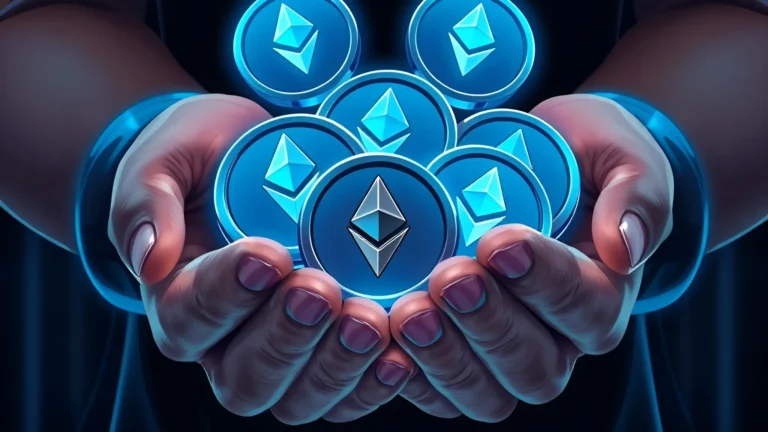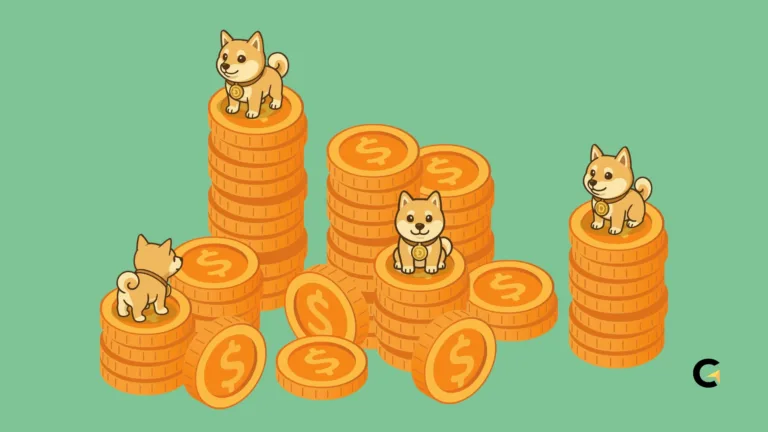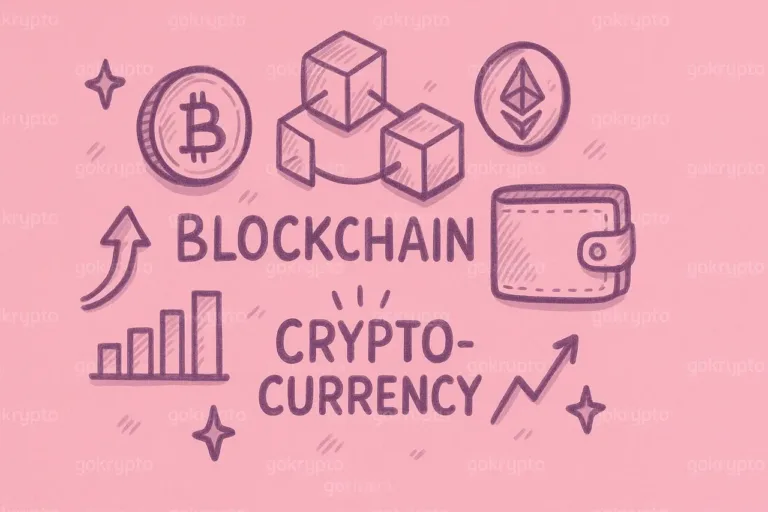HBAR Price Prediction 2050: Bullish, Bearish, or Just Meh?
In the ever-evolving and fast-paced world of cryptocurrency, Hedera (HBAR) has emerged as a breath of fresh air—offering a novel approach that sets it apart from the vast majority of digital assets.
Rather than merely being another blockchain project, Hedera is built upon Distributed Ledger Technology (DLT) using a hashgraph consensus model—a groundbreaking innovation promising ultra-fast transaction speeds and military-grade security.
With the capability to handle hundreds of thousands of transactions per second, many believe Hedera represents the next generation of decentralized systems.
But when it comes to one of the most pressing questions in the minds of investors and analysts—“What will HBAR be worth in 2050?”—the answers vary drastically.
Some platforms, such as Plisio, forecast astronomical price points in the dozens of dollars, while others like Coingape project a far more modest outlook, predicting that HBAR may not even break the 25-cent mark.
This disparity highlights a core truth: the crypto market remains a space filled with uncertainty.
This article delves deep into Hedera and the HBAR token, examining long-term price predictions and extreme future scenarios that could play out over the next 25 years.
Principal Conclusions
Hide-
Unique Technology: Hedera uses hashgraph DLT, delivering exceptional speed and security (up to hundreds of thousands of TPS), outperforming conventional blockchains.
-
Diverse 2050 Forecasts: Platforms such as Plisio forecast an average HBAR price of $47.98, while Coingape predicts a more conservative $0.244.
-
Price Drivers: Mass adoption by major enterprises, dApp development, and strategic collaborations could significantly boost demand and price.
-
Market Volatility: Crypto price movements remain heavily influenced by speculation, regulation, and macroeconomic trends—making long-term projections inherently uncertain.
-
Risks and Rewards: Despite high potential returns, investors must remain cautious of downside risks, including technological vulnerabilities and negative sentiment.
Through in-depth analysis and comprehensive storytelling, we’ll uncover the real potential of this compelling technology.
Understanding Hedera and the Vital Role of the HBAR Token
What Is Hedera?
Hedera isn’t just another blockchain—it’s a revolution in the making. At its core lies the hashgraph consensus mechanism, enabling unprecedented levels of efficiency and security without the energy-intensive mining processes seen in Bitcoin or Ethereum.
Through a mechanism known as “gossip about gossip” combined with “virtual voting,” nodes rapidly share transaction information while preserving the integrity of consensus in a highly efficient manner.
The primary advantage of hashgraph is scalability. In internal tests, Hedera has demonstrated the ability to handle hundreds of thousands of transactions per second (TPS)—far surpassing the capacity of traditional blockchains, which typically range from a handful to a few thousand TPS at best.
The Role of HBAR
HBAR is the lifeblood of the Hedera ecosystem. It is used to pay for transaction fees, execute smart contracts, and reward node operators for maintaining network stability.
But beyond its utilitarian value, HBAR also plays a governance role: token holders have voting rights over network upgrades, validator selection, and protocol parameters.
Its thoughtfully designed tokenomics also enable staking, allowing users to earn yield while contributing to network security—a powerful incentive that aligns community and protocol growth.
Factors That Could Influence HBAR’s Long-Term Price Trajectory
Technology Adoption and Strategic Partnerships
The future of any DLT network—including Hedera—hinges on who adopts it. If major corporations, particularly Fortune 500 companies, integrate Hedera into their operational infrastructure, market confidence will likely follow suit.
Hedera has already secured collaborations with prominent entities, and the momentum appears to be building.
The broader the network of adoption, the higher the utility demand for HBAR. Moreover, participation from government institutions would lend critical legitimacy to Hedera’s long-term prospects.
Growth of dApps and the DeFi Explosion
Hedera offers developers fertile ground for building decentralized applications (dApps), spanning sectors like digital identity, supply chain logistics, and decentralized finance (DeFi).
Should Hedera emerge as the backbone of these applications, HBAR would naturally become the currency of choice for transaction fees and network usage.
As the ecosystem grows and transaction volume expands, organic demand for HBAR will rise—potentially leading to a gradual, if not exponential, increase in price.
Macroeconomic Conditions and Market Sentiment
Like other digital assets, HBAR’s price is sensitive to external factors such as interest rates, inflation, global regulations, and geopolitical tensions.
A case in point: in 2021, bullish sentiment drove HBAR’s price to a high of $0.57 before a sharp correction took place.
We can expect similar cycles in the future, albeit in different contexts. Regulatory policies in regions like the U.S., China, and the EU will remain key indicators of the crypto market’s direction.
Tokenomics and Staking Incentives
Hedera’s staking mechanism encourages HBAR holders to lock up their tokens, enhancing network security.
As more tokens are staked and removed from circulation, the available market supply shrinks. If demand holds or increases, basic economic principles suggest upward pressure on price.
HBAR Price Predictions for 2050: Comparing Market Perspectives
| Source | Scenario | Min Price (2050) | Avg Price (2050) | Max Price (2050) |
|---|---|---|---|---|
| Plisio | Bullish Extreme | $45.72 | $47.98 | $52.63 |
| Coingape | Conservative | $0.2427 | — | $0.2441 |
| Changelly | Conservative | $0.1803 | $0.2355 | $0.2240 |
| Finance Shots | Moderate Bullish | — | — | — (focus on adoption) |
Plisio delivers a bullish forecast, predicting that HBAR could reach an average price of $47.98 by 2050, ranging from $45.72 to $52.63.
These figures are built on assumptions of widespread enterprise adoption, explosive dApp growth, and strong real-world utility.
2. Coingape: Conservative Caution
In stark contrast, Coingape offers a more reserved outlook, estimating HBAR at just $0.244 by 2050—nearly stagnant compared to past performance.
Their model assumes high volatility and cautious institutional investment in high-risk crypto assets over the long term.
3. Changelly: Balanced Realism
Offering a middle-ground perspective, Changelly predicts an average HBAR price of $0.2355 by 2050, with a range of $0.1803 to $0.2240. This projection relies on historical technical analysis and a modest growth trajectory.
4. Finance Shots: Adoption as the Key
Finance Shots doesn’t provide numerical forecasts but highlights that HBAR’s future value will largely depend on the depth and breadth of Hedera’s real-world adoption.
Their focus on practical utility positions HBAR as a strong candidate for digital infrastructure leadership.
Price Scenarios for HBAR in 2050
1. Bullish Extreme Scenario
Assumptions:
-
Hedera becomes the leading dApp platform globally.
-
Strategic partnerships with governments and global corporations expand.
-
HBAR gains global recognition as a valuable asset.
Implications:
-
Price surges past $50.
-
Liquidity and network activity explode.
-
Hedera dominates the DLT landscape.
2. Conservative Scenario
Assumptions:
-
Competing networks remain strong (e.g., Solana, Polkadot).
-
Adoption grows slowly amid regulatory uncertainty.
-
The crypto market matures without exponential expansion.
Implications:
-
Price remains in the $0.18–$0.25 range.
-
Low ROI may drive investors elsewhere.
-
Growth stagnates relative to competitors.
3. Bearish Scenario
Assumptions:
-
Major security incident or critical bug erodes user trust.
-
Harsh regulatory crackdowns limit activity.
-
Competing technologies outpace Hedera in innovation and user base.
Implications:
-
Price plummets below $0.10.
-
Network confidence collapses.
-
Transaction volume and developer activity decline sharply.
Challenges, Risks, and Strategic Opportunities
1. Inescapable Volatility
Volatility is part of crypto’s DNA. A single negative headline can spark a market-wide sell-off, while positive news can trigger surges. For long-term investors, understanding and preparing for this volatility is essential.
2. Evolving Regulations
Regulatory frameworks are still developing. While forward-thinking regulation could propel adoption, excessive or unclear policies may stifle innovation and reduce investor confidence.
3. Fierce Technological Competition
Rivals like Solana, Polkadot, and Avalanche are advancing quickly in scalability and developer engagement. Hedera must not only innovate continuously but also secure meaningful partnerships to remain competitive.
4. Security and Trust
Though Hedera has maintained a strong security track record, even a single breach could derail progress. Fast, transparent response to any threat is critical to preserving trust and long-term stability.
Final Thoughts: The Long Road to 2050
HBAR price predictions for 2050 span a vast range—from under 25 cents to over $50. These projections reflect more than just financial speculation; they represent differing worldviews about technology adoption, global economics, and human behavior.
Will HBAR become the “digital gold” that powers tomorrow’s decentralized infrastructure? Or will it be just another ambitious project that fades with time?
The answer won’t come today. But one thing is certain: navigating the crypto space, especially with assets like HBAR, requires sound research, disciplined risk management, and a nuanced understanding of a fast-changing technological landscape.
Frequently Asked Questions (FAQs)
What Is Hedera (HBAR)?
Hedera is a Distributed Ledger Technology (DLT) platform powered by the hashgraph consensus algorithm. Unlike traditional blockchains, it achieves fast, secure, and energy-efficient transactions without relying on mining. The native token, HBAR, is used to pay transaction fees and to incentivize validators who maintain the network’s integrity.
Why Do Price Predictions for 2050 Vary So Widely Between Sources?
The discrepancy in price forecasts stems from differing baseline assumptions. Some analysts envision a future where Hedera achieves massive adoption and forms strategic partnerships with global enterprises (bullish scenario). Others take a more conservative view, pointing to stiff competition and macroeconomic headwinds that may limit growth.
Could HBAR Reach $50 by 2050?
In the most optimistic scenario, Plisio projects that HBAR could average $47.98 and potentially reach as high as $52.63 by 2050. This forecast hinges on widespread adoption of decentralized applications (dApps) built on Hedera and substantial corporate backing.
However, it’s important to recognize that such predictions are highly speculative and dependent on a wide range of external variables—from global market sentiment to technological evolution.
How Does Hedera Compete with Other Blockchains Like Ethereum or Solana?
Hedera differentiates itself through superior throughput and lower transaction fees, thanks to its hashgraph architecture. Furthermore, its decentralized governance model—featuring participation from major global corporations—adds a layer of institutional trust and credibility that many competing blockchains still struggle to secure.
What Are the Biggest Risks of Investing in HBAR for the Long Term?
The most significant risks include:
-
Market volatility: The crypto space is notoriously unpredictable.
-
Regulatory uncertainty: Future legislation could restrict or reshape Hedera’s utility.
-
Security threats: Bugs or major hacks could undermine user trust.
-
Intense competition: Rival DLT projects with faster innovation or greater adoption could outpace Hedera.
Any of these factors, if realized, could apply serious downward pressure on HBAR’s price over time.







